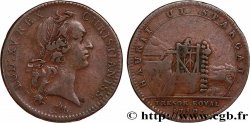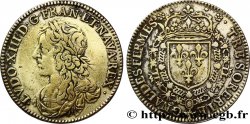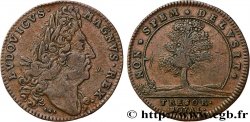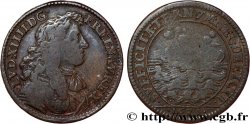E-auction 249-172475 - fjt_452013 - TRÉSOR ROYAL Trésoriers de France à Paris 1598
You must signin and be an approved bidder to bid, LOGIN TO BID. Accounts are subject to approval and the approval process takes place within 48 hours. Do not wait until the day a sale closes to register. Clicking on « bid » constitutes acceptance of the terms of use of cgb.fr private e-auctions.
Bids must be placed in whole Euro amounts only. The sale will start closing at the time stated on the item description; any bids received at the site after the closing time will not be executed. Transmission times may vary and bids could be rejected if you wait until the last second. For further information ckeck the E-auctions F.A.Q.
NO BUYER'S FEE.
NO BUYER'S FEE.
| Estimate : | 75 € |
| Price : | 24 € |
| Maximum bid : | 26 € |
| End of the sale : | 22 January 2018 18:55:30 |
| bidders : | 4 bidders |
Type : Trésoriers de France à Paris
Date: 1598
Metal : brass
Diameter : 28 mm
Orientation dies : 6 h.
Weight : 6,39 g.
Edge : lisse
Rarity : R2
Catalogue references :
Obverse
Obverse legend : HENRICVS. IIII. FRANCORVM. ET. NAVARAE. REX.
Obverse description : Écu de France et de Navarre entourés des deux colliers des Ordres du Roi.
Reverse
Reverse legend : FRAVS. VIRTVTE. PERIT ; À L'EXERGUE : 1598.
Reverse description : Lion égorgeant un renard.
Reverse translation : La ruse est anéantie par la vaillance.
Commentary
Ce jeton a un revers que l’on retrouve pour les Corre 2809 (N. Le Camus, officier à la Cour des Monnaies) 2237 (Guinot) et 2314 (Monogramme non identifié). Il semble donc que ce type de revers est général pour les trésoriers ou controleurs des monnaies mais l’explication de Feuardent est plus intriguante. Le renard serait pour Robert Dudley, duc de Leicester, qui conseilla à Elisabeth Ier d’empoisonner Marie Stuart, voir http://fr.wikipedia.org/wiki/Robert_Dudley .








 Report a mistake
Report a mistake Print the page
Print the page Share my selection
Share my selection Ask a question
Ask a question Consign / sell
Consign / sell
 Full data
Full data



